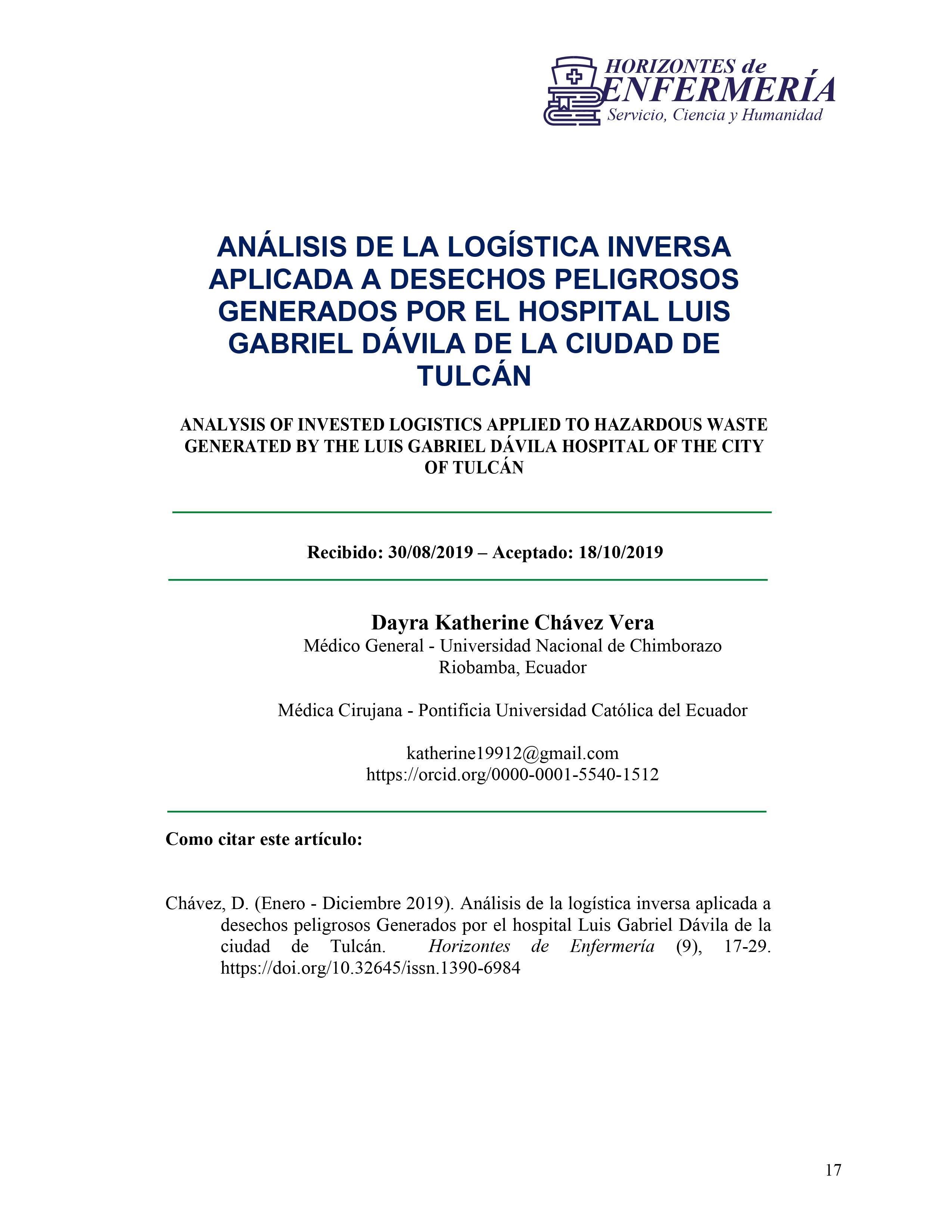Analysis of invested logistics applied to hazardous waste generated by the Luis Gabriel Dávila hospital of the city of Tulcán
DOI:
https://doi.org/10.32645/13906984.827Keywords:
Reverse logistics, supply chain, pollution, environment, hospital hazardous wasteAbstract
One of the characteristics of reverse logistics is to be immersed in the supply chain, through a reverse supply link that has sought to generate value again for those products that have been discarded by the end customer and that affect the environment because they are products It takes millions of years to degrade. The case under study was related to sharps containers of the Luis G. Dávila Hospital in Tulcán, used to store hazardous wastes (needles, scalpels and other tools that cut or penetrate the skin), which have generated and generate pollution effects due to lack of commitment and social responsibility by the institution. The purpose of this study is to establish an analysis of the logistics process applied in the hospital and the strategies that reduce the environmental impact of these wastes by reusing containers that have been made from industrial plastic. A quantitative investigation was applied with the use of statistical data granted by the Hospital Quality Department; its application determined the execution of the analysis of the supply chain regarding the disposal of hazardous wastes based on the observation of the use of reverse logistics within the supply chain. It was concluded that it is vital to carry out the adoption of a reverse logistics process in the hospital supply chain to generate economic and environmental benefits that allow us to obtain advantages that do not affect the environment.

Downloads
Published
Issue
Section
License
Copyright (c) 2019 Dayra Katherine Chávez Vera

This work is licensed under a Creative Commons Attribution-NonCommercial-ShareAlike 4.0 International License.
El autor mantiene los derechos morales e intelectuales de su obra, autorizando a la editoruial de la revista revista Horizontes de Enfermería ladifusión y la divulgación de su contenido con fines estrictamente académicos y de investigación, sin fines de lucro.




